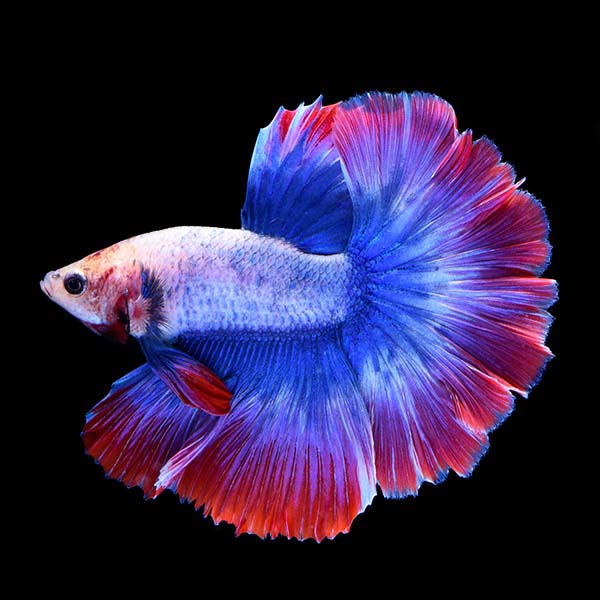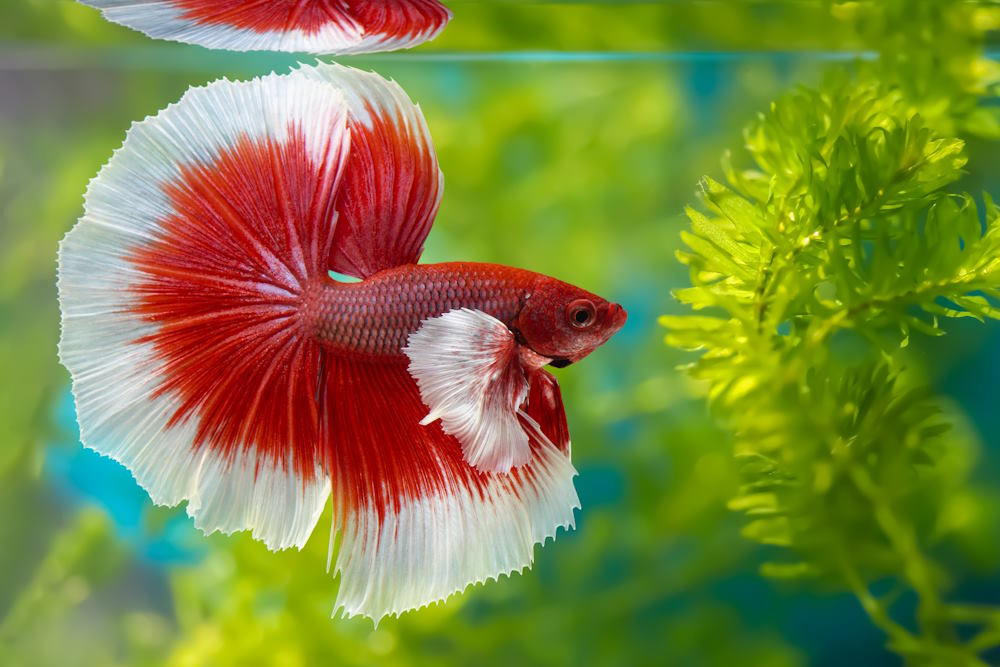Betta Fish Lifespan: Just How to Ensure Your Betta Lives Longer
Betta Fish Lifespan: Just How to Ensure Your Betta Lives Longer
Blog Article
Reproducing Betta Fish: a Comprehensive Step-By-Step Guide to Successfully Raising Baby Bettas From Eggs to Their Adult Years
Reproducing Betta fish is a thorough venture that requires careful preparation and execution to make certain the effective development of fry from eggs to grow fish. As the male Betta diligently constructs a bubble nest and guards the precious eggs, the subsequent phases of treatment and change demand focus to information and understanding of ideal practices.

Picking Reproduction Pairs
When starting the trip of breeding Betta fish, choosing the best breeding pairs is crucial to accomplishing preferable characteristics and a healthy and balanced lineage - betta fish. The initial step in this process is to recognize the specific traits you wish to improve or maintain, such as shade, fin type, and physique. It is necessary to select genetically diverse pairs to stay clear of inbreeding, which can cause health and wellness concerns and undesirable characteristics
Assess potential breeding prospects thoroughly. A healthy male Betta must display vibrant shades, an active behavior, and well-formed fins, while the woman needs to likewise present lively pigmentation and a rounded stubborn belly, suggesting readiness for spawning. Observing the personality of both fish is important, as aggressive or overly timid individuals may not breed effectively.
Keeping documents of the moms and dad fish's ancestry can help you track hereditary characteristics and prospective concerns. Eventually, investing time in the choice procedure will substantially enhance the likelihood of producing solid, vibrant spawn that fulfill your breeding objectives.

Preparing the Reproduction Storage Tank
Creating an optimal reproduction environment is a key action after picking ideal pairs for Betta fish. The reproduction container should be particularly developed to supply comfort and boost the all-natural breeding habits of the fish. Start with a storage tank size of at the very least 10 gallons to make sure appropriate room for both the male and female Bettas.
Keep a gentle filtering system to maintain the water tidy while preventing strong currents that can emphasize the fish. Furthermore, an air rock can be included in offer oxygenation without interfering with the water surface excessive.
Temperature guideline is vital; go for a steady series of 78-82 ° F(25-28 ° C) using a trustworthy heater. The pH degree should be preserved in between 6.5 and 7.5, and normal water changes are needed to ensure high water quality.
Integrate drifting plants or generating mops to produce hiding places for the female, while likewise encouraging bubble nest building by the man - betta fish. Make certain the storage tank is complimentary from sharp decors and any possible dangers, as the welfare of the fish should constantly be prioritized throughout this important phase of reproduction.
The Reproduction Process
Normally, the reproducing process for Betta fish includes a collection of unique and observable actions that suggest preparedness for recreation. The male Betta starts by developing a bubble nest at the water's surface see this here area, which functions as a site for the fertilized eggs. This nest is important, as it gives a safe environment for the eggs until they hatch.
When the nest is developed, the male will certainly show courtship behaviors, such as flaring his fins and displaying lively shades to draw in the lady. The female, upon picking up the male's readiness, will respond by displaying vertical red stripes along her body, signifying her receptiveness.
The fertilized eggs then fall to the bubble nest, where the male very carefully collects and returns them to the nest. Following this, the male presumes obligation for securing the nest and making certain the safety of the eggs up until they hatch, commonly within 24-36 hours.
Taking Care Of Betta Fry
Caring for Betta fry requires cautious interest to their setting and nutrition to make sure healthy growth and growth. After hatching out, Betta fry are exceptionally small and prone, requiring a secure and tidy environment. Preserving a water temperature level in between 78 ° F and 80 ° F is important, as Betta fry flourish in cozy problems. In addition, ensure that the water is cost-free of damaging toxins; regular water changes of 10-20% are advised to keep ideal water top quality.
Feeding informative post Betta fry is equally crucial. Originally, they ought to be used infusoria or carefully crushed high-quality fry food, as their mouths are as well little to manage bigger fragments. As they grow, you can slowly introduce larger foods, such as baby brine shrimp or powdered flakes, to ensure they obtain sufficient nutrition. Feed them percentages several times a day, being careful not to overfeed, which can result in water quality issues.
Transitioning to Adult Bettas
As Betta fry fully grown, transitioning them to grown-up Bettas is an important stage that needs careful management of their environment and social communications. This process usually begins when the fry get to around 6 weeks of age, at which point they can be gradually presented to an extra structured living environment.
To promote this change, it is important to guarantee that the water parameters-- such as temperature level, pH, and ammonia levels-- are optimum and stable. Grown-up Betta fish prosper in warm water (around 78-80 ° F) with a pH of 6.5 to 7.5. Progressively accustom the fry to these problems to reduce tension.
Social interactions are another key element; man Bettas are infamously territorial and hostile. Consequently, it is suggested to different men right into individual storage tanks as they mature. Women Bettas can be housed with each other, but treatment ought to be required click here to find out more to keep an eye on for indications of aggressiveness.
In addition, nutritional changes ought to be made as the fry grow. Include high-grade pellets and live foods to support their growth and wellness. By taking care of these elements successfully, you can advertise a successful shift to their adult years for your Betta fish.

Conclusion
Successful reproduction of Betta fish needs careful focus to information throughout the entire procedure, from choosing genetically diverse sets to offering optimum care for fry. Additionally, a balanced diet and gradual adjustment to adult environments are vital for the development and growth of Betta fish.
Report this page